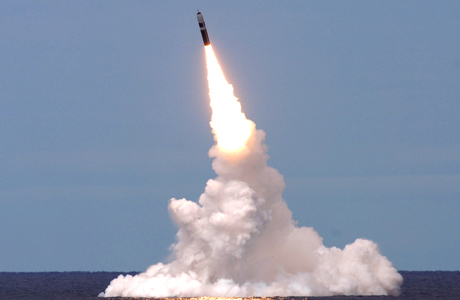In yet another milestone for Additive Manufacturing (AM), the U.S. Navy has successfully test-flown three Trident II D5 Fleet Ballistic Missiles carrying a 3D-printed missile component — a part called a connector backshell.
Lockheed Martin engineers designed and fabricated the new component in half the time of traditional methods. The connector backshell, which protects cable connectors in the missile, is made from an aluminium alloy and measures about one inch across.
The Navy launched the unarmed missiles in the Atlantic Ocean from a submerged submarine. The missiles were converted into test configurations using kits produced by Lockheed Martin that contain range safety devices and flight telemetry instrumentation. The test flights were part of a follow-on commander's evaluation test of the Trident Strategic Weapon System conducted under the testing guidelines of the Joint Chiefs of Staff.
Lockheed Martin says that the 3D-printed component for the D5 missile is an example of the improved products and processes enabled by the company’s Digital Tapestry, a set of advanced manufacturing tools that connect a product's digital life from concept to production to sustainment.
The Trident II D5 missile is deployed aboard U.S. Navy Ohio-class and U.K. Royal Navy Vanguard-class submarines. The three-stage ballistic missile can travel a nominal range of 4,000 nautical miles and carry multiple independently targeted reentry bodies.

